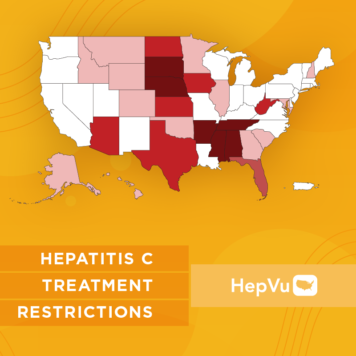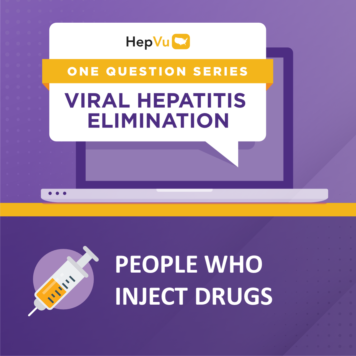Diana Padilla, MCPC, CARC, is a Research Project Manager for the Northeast & Caribbean Addiction Technology Transfer Center, at New York State Psychiatric Institute, Columbia University Medical Center.
She is a senior trainer and curriculum developer providing workforce support to addiction and prevention professionals, and ancillary community partners.
Can you share how you became involved in the intersection of Hepatitis C and opioid use? What led you to develop curricula on this topic for behavioral health care providers?
While working with the Northeast Caribbean Addiction Technology Transfer Center in 2014-15, which provides workforce support to addiction professionals, there was substantial data that was speaking to the third wave of the opioid overdoses. Simultaneously, there were a lot of Hepatitis C diagnoses associated with these epidemics. Ultimately, the correlation came to be evident that treatment settings did not have enough capacity to address Hepatitis C, even though they were in the best position to capitalize on the contact they have with clients at the time.
There was a significant lack of knowledge overall about the intersection of Hepatitis C and opioid use, even in medical fields. This indicated a need for us to start working on a curriculum to provide information about this intersection, so that it can trickle down into the communities in need. I’m also a curriculum developer, not just a trainer. I was fortunate to work with Dr. Brian Edlin, currently the Chief Medical Officer at the CDC, who has always been in Infectious disease, and who has always been a huge advocate for Hepatitis C services across different disciplines. Through our organization, the NeC ATTC, we partnered with him and started working on a curriculum to inform the addiction discipline.
HepVu maps multiple aspects of the opioid epidemic in the United States, including opioid prescription rates, overdose mortality, and pain reliever misuse. From your perspective, what is the importance of mapping these trends geographically?
I tend to look at trends to see what is currently emerging while also examining what happened in the past, so we can be more informed as we go forward. But that’s for folks who like to look at the research and the data. There are many times that people are doing direct services and focusing on immediate client needs, whether it is addiction, mental health, prevention, or substance use disorder, and do not look at how the data can actually inform their practices. Mapping data, like HepVu does, makes it easier for providers to understand how emerging findings can be used to inform and improve their practice.
Outside of geography, what are some of the key trends in opioid use that you reference in your curricula, and do they point to a common thread in the opioid use landscape?
There’s a new curriculum, Your Guide to Integrating HCV Services Into Opioid Treatment, led by Kelly Reinhart from the network center office for the Addiction Technology Transfer Center Network (ATTC). She has a great team of practitioners working in treatment centers, and they are identifying and emphasizing an integrated model to address Hepatitis C among people with substance use disorders in treatment settings, reducing stigma and removing barriers to care.
Additionally, there are organizations that are doing outreach to the active substance using communities. Even if folks are not coming into care, harm reduction and substance use treatment organizations are helping those hard to reach populations and helping them learn—if they need to use—how to do it safely, how to get access to clean syringes, and how to be able to take care of themselves or use together so they can save the other person from an overdose with a Naloxone kit.
People who inject drugs and also share needles are at high risk for diseases such as HIV and Hepatitis C. In addition, mixing opioids with other drugs or having a relapse after stopping use for some time lowers tolerance and increases risks of opioid overdose and death. So, those are also topics that the curriculum teaches as part of their comprehensive approach to addressing Hepatitis C in treatment.
What role can harm reduction strategies, such as needle exchange programs and medication-assisted treatment, play in reducing rates of viral hepatitis among people who inject drugs, and how can incorporating viral hepatitis testing into these strategies improve health outcomes for this population?
The research shows that those strategies have been effective in terms of prevention, but they are not as widely integrated in substance use treatment settings. This is the biggest issue.
It is still effective to go into communities that are actively injecting and give them clean syringes or show them where they can go to access clean equipment. We have a pilot program in New York, OnPoint New York City, and it is an amazing supervised safe injection site pilot program where folks can go inject drugs without the fear of going to jail. They’ve stopped almost 700 overdoses so far. They offer the clean syringes, meals, and potential access to treatment centers. They help communities understand substance use and overdose risks, educate them about various health concerns including viral hepatitis, and how they can take care of their hepatitis even if they are actively using.
Certainly, it is also important to help those folks who do come into their recovery process understand how to take full accountability for their own health and educate them on how they can get screened and linked to care. So, harm reduction programs—and even a lot of treatment programs like Acacia, Samaritan Village and Emma Bowen—are providing fentanyl strips or Xylazine test strips. However, this is not a practice that is widely used or standardized yet. Part of the movement right now is trying to show how effective this type of outreach can be.
May is Hepatitis Awareness Month, and HepVu is working to increase public awareness about the importance of getting tested, getting vaccinated, and seeking treatment for viral hepatitis. What message do you have for providers, prevention professionals, and community partners when it comes to this topic?
It’s important for us not to lose sight of all the challenges and stressors that people who use opioids deal with, which underscores their substance use and puts them at risk for Hepatitis C and other illnesses. Professionals and organizations in other settings have the opportunity to not only provide comprehensive care, but also to help folks understand that there is hope for recovery and that their wellness process is possible.




